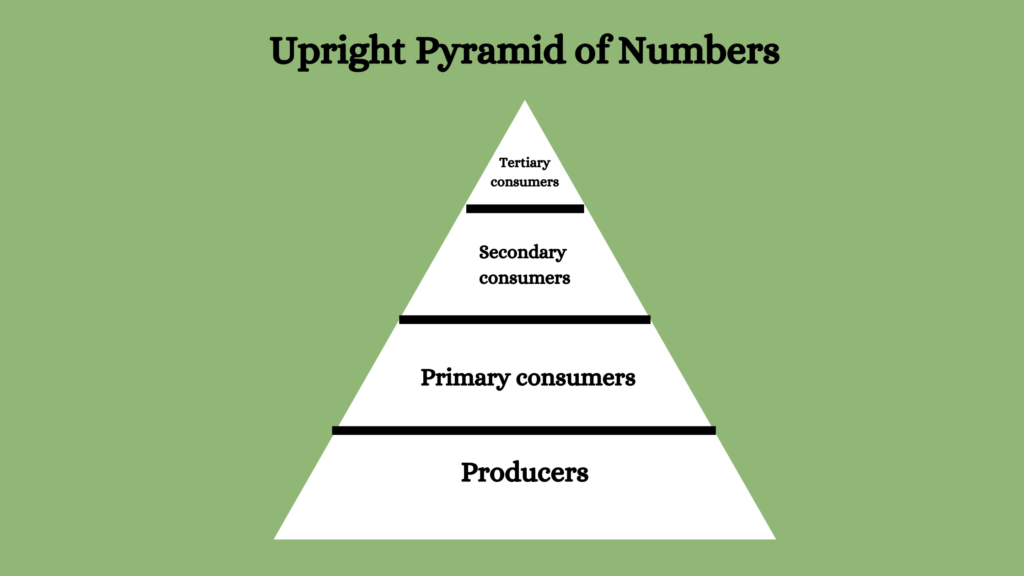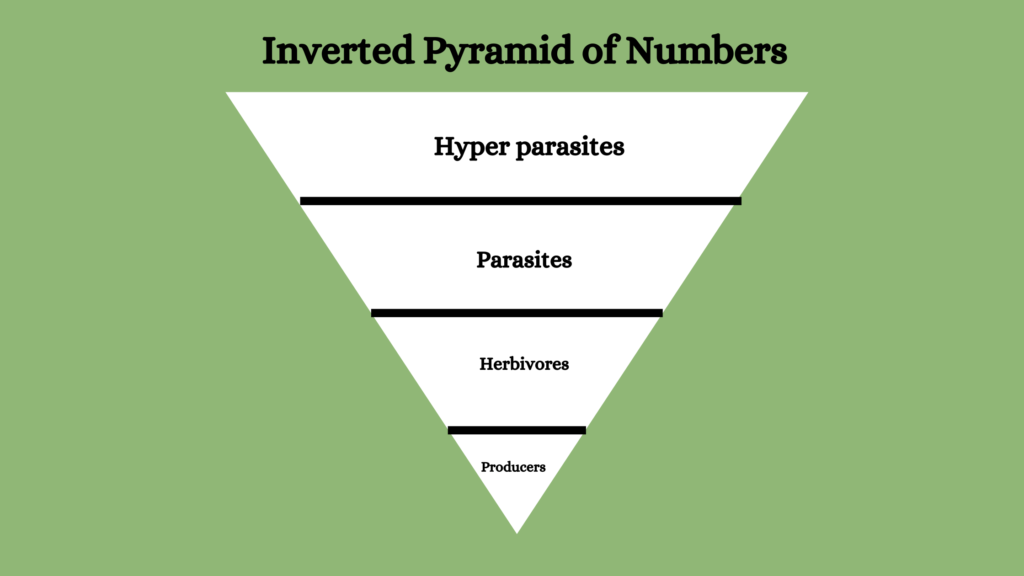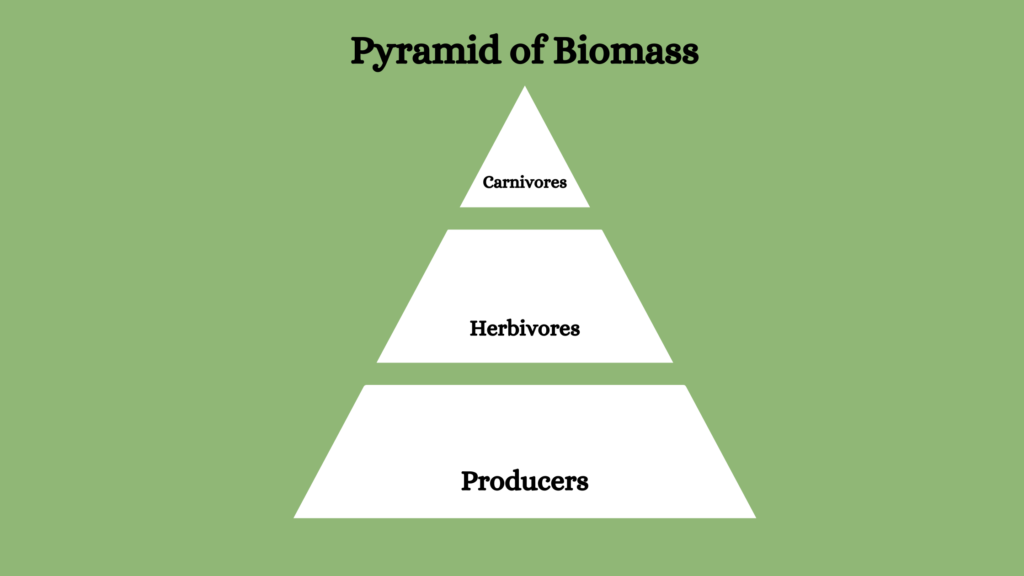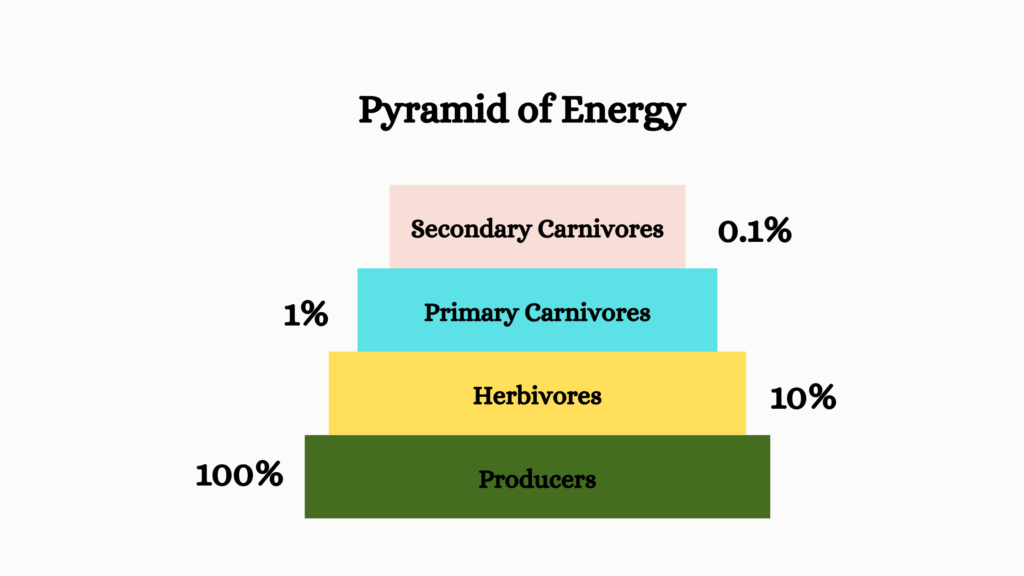The food chain in an ecosystem consists of several food levels extending from the primary producers to the top carnivores. Each food level is a step in the food chain and various steps are interconnected with each other, giving the ecosystem a definite tropic and functional structure. Ecological pyramids and its types are the link between the trophic levels and energy transfer.
- An ecological pyramid always has at least two and up to four layers.
- Each layer is occupied by different organisms having the same source of food.
- The lowest layer is always occupied by the producers which have the largest population.
- Predators, usually in the top-most layer have a smaller population.
- The upright pyramids of energy and biomass indicate a steady decrease going from the bottom to the top.
What are Ecological Pyramids?
The interrelationship between the successive food levels may be expressed in terms of the number of individuals, biomass, or energy flow. This relationship can be expressed geographically by diagrams called ecological pyramids.
At the base of the pyramid are the top carnivores occupy the primary producers or green plants and the apex while the herbivores and intermediate carnivores occupy the successive food levels.
Types of Pyramid in Ecosystem
Ecological pyramids may be constructed based on numbers (pyramid of numbers), biomass (pyramid of biomass), and the rate of energy flow.
Pyramid of Numbers
The pyramid of numbers depicts the number of individual producers and consumers of an ecosystem. This was proposed by Charles Elton in 1927.
A pyramid of numbers considers the number of individuals per unit area at any given time. The shape of the pyramid depends on the size of the individuals or the primary producers.
In a pyramid of numbers, the producers occupy the base followed by successive levels of consumers from herbivores onwards. Here the base is formed by plants and algae, hydrophytes, and diatoms. The second trophic level is occupied by zooplankton and herbivores. The next level has carnivores.
It indicates that the largest population of producers is consumed by consumers who are lower in number than them. The primary consumers are larger in number but they are consumed by secondary consumers that are lesser in number. The same pattern allows for the secondary and tertiary consumers as well.
Thus a pyramid of numbers in ecology shows a reduction in the number of individuals with an increase in their body size from the base to the top. Depending on this there are two types of pyramid of numbers.
A. Upright Pyramid of Number
If the primary producers are small as compared to the consumers, the pyramid will be upright or erect. An example of such a pyramid is seen in a pond. The primary producers are the diatoms, green algae, and minute organisms. They are small in size but their number is very large and they form the broad base of the pyramid.

Above these are the herbivores represented by fish, followed by top carnivores such as larger fishes, herons, storks, etc. As the number of individuals goes on decreasing in the successive trophic levels, the result is an upright triangular-shaped pyramid.
B. Inverted Pyramid
In an inverted pyramid, the size of the individual producers is larger and their size decreases with each successive consumer. The number of organisms in a trophic level decreases as their size increases. This type of ecological pyramid is usually seen with a parasitic food chain.

As a result, the producer level which always occupies the base level will be the smallest. This is followed by increasing the size of the trophic level as we go up. The pyramid thus formed will be inverted. Eg, A tree ecosystem.
The single tree is the producer of this system where a large number of herbivorous birds live. On the body of these birds, there will be bugs and lice. This type of pyramid will be represented as shown in the figure.
Pyramid of Biomass
A pyramid of biomass describes the relationship between different trophic levels of an ecosystem based on their living weight (dry or fresh weight). It was Bodenheimer in 1938 who came up with this type of pyramid
When the biomass of the individual producers is large, the biomass of the successive consumer level will show a progressive decrease in their weight. This results in the biomass pyramid being upright.

The pyramid of biomass is the total living weight or biomass of all the members of a food chain, present at any particular time. This indicates the bulk of organisms or fixed energy of that one time. It can be denoted using weight or measuring materials.
The pyramid of biomass shows the decline in the biomass of each trophic level from its base to the top. It means that the total biomass of producers is more than that of herbivores, which is higher than primary and secondary carnivores.
Sometimes, the biomass pyramid is inverted when the individual primary producer level is smaller with small biomass and the size of the consumers gradually increases with each trophic level. A pond ecosystem is one such example.
Some of the energy will be lost in each successive link so the total mass of each level is limited by the rate of energy that is stored. This will result in a sloping pyramid in most communities in both water and terrestrial ecosystems.
Pyramid of Energy
A fundamental principle of ecology is that energy flows through a food chain in the ecosystem in several steps until it reaches the top carnivores. At every step commencing with the primary producers, a large amount of energy content is lost by radiation in the form of heat, a process called thermal emission.
The pyramid of energy in an ecosystem is a depiction of the total energy used by the individuals of each trophic level and the role of each individual in the process of transfer of energy from one level to the next. In 1942 Hutchinson was the one who proposed this.

The total energy level will be the highest at the base that the producers occupy. Here, the total biomass of the producers may be smaller but the energy they assimilate is much higher than an individual having larger biomass of another trophic level.
The energy utilization in the higher trophic levels is more efficient but they lose a significant portion of the energy as heat during energy transfer. The amount of energy lost due to respiration is also higher from the base level to the higher trophic level.
The pyramid of energy shows that the energy flow is unidirectional and there is a progressive reduction of energy level in each trophic level since the dissipation of energy as heat is higher as we move from the base to the top. This is spent on the various metabolic activities of the organisms.
Thus, as we go up the food chain, the energy content of each trophic level decreases regardless of the number of biomass at the respective levels. Thus the pyramid of energy will always be upright.
References
- G. (2024, February 14). Ecological Pyramid Definition, Types, Importance, Limitations. GeeksforGeeks. https://www.geeksforgeeks.org/ecological-pyramid-its-types/
- Shukla, R.S. and Chandel, P.S. (2001) Plant Ecology. S. Chand and Company Ltd., New Delhi.
- Verma, P.S., Agarwal, V.K. (1999). Cell Biology Genetics Molecular Biology Evolution and Ecology. New Delhi: S.Chand Co.(Pvt) Ltd.




